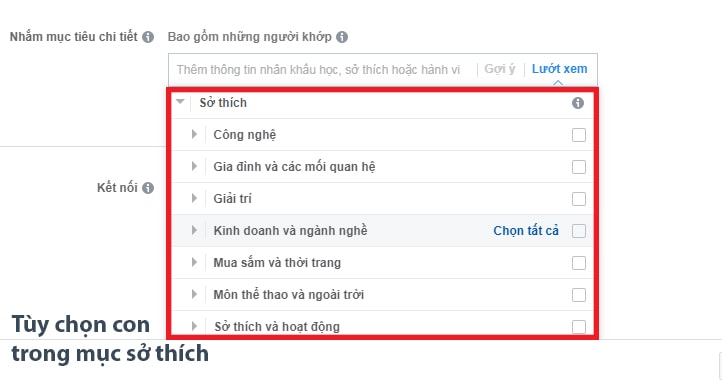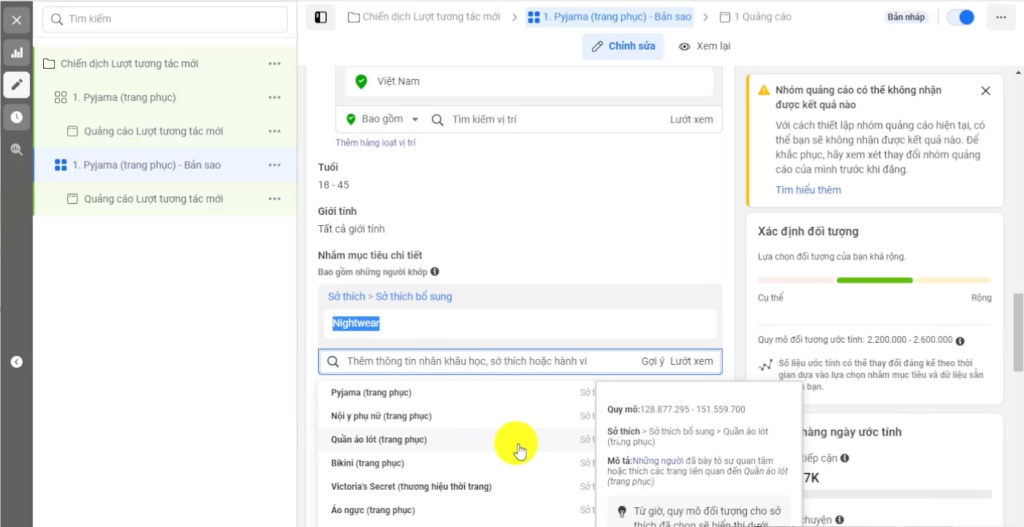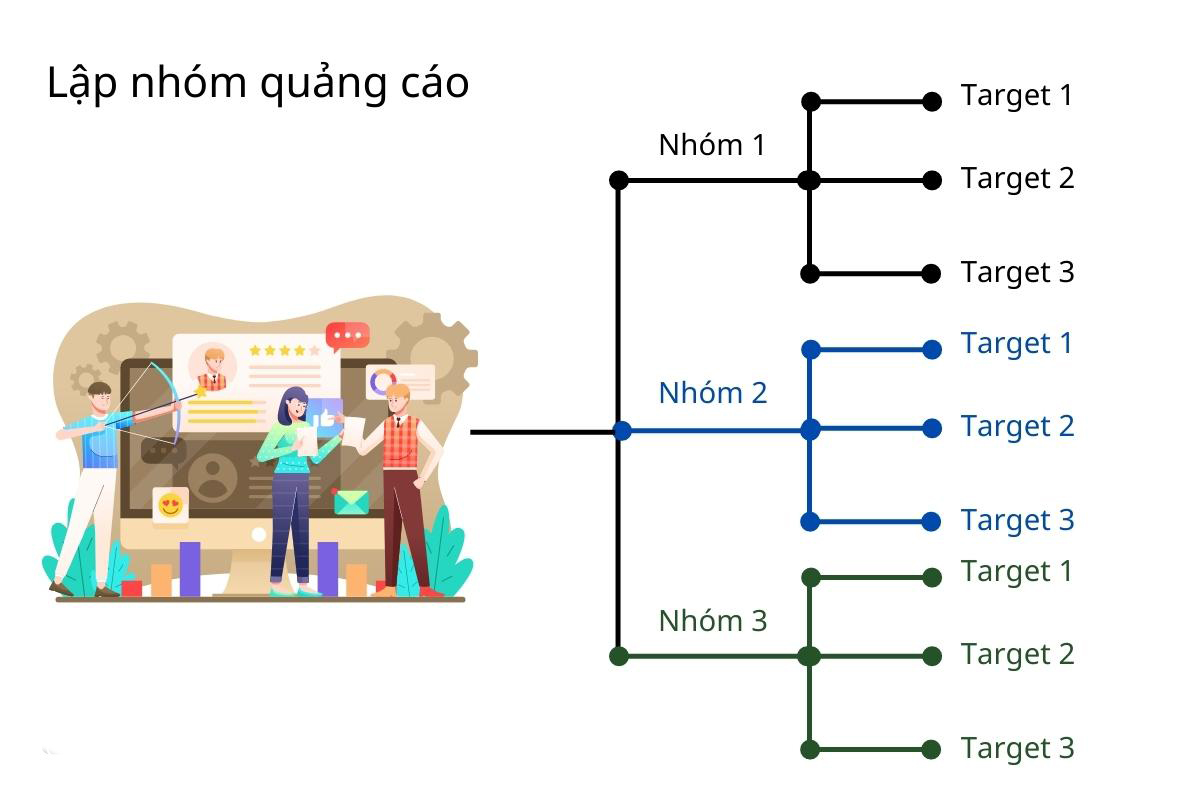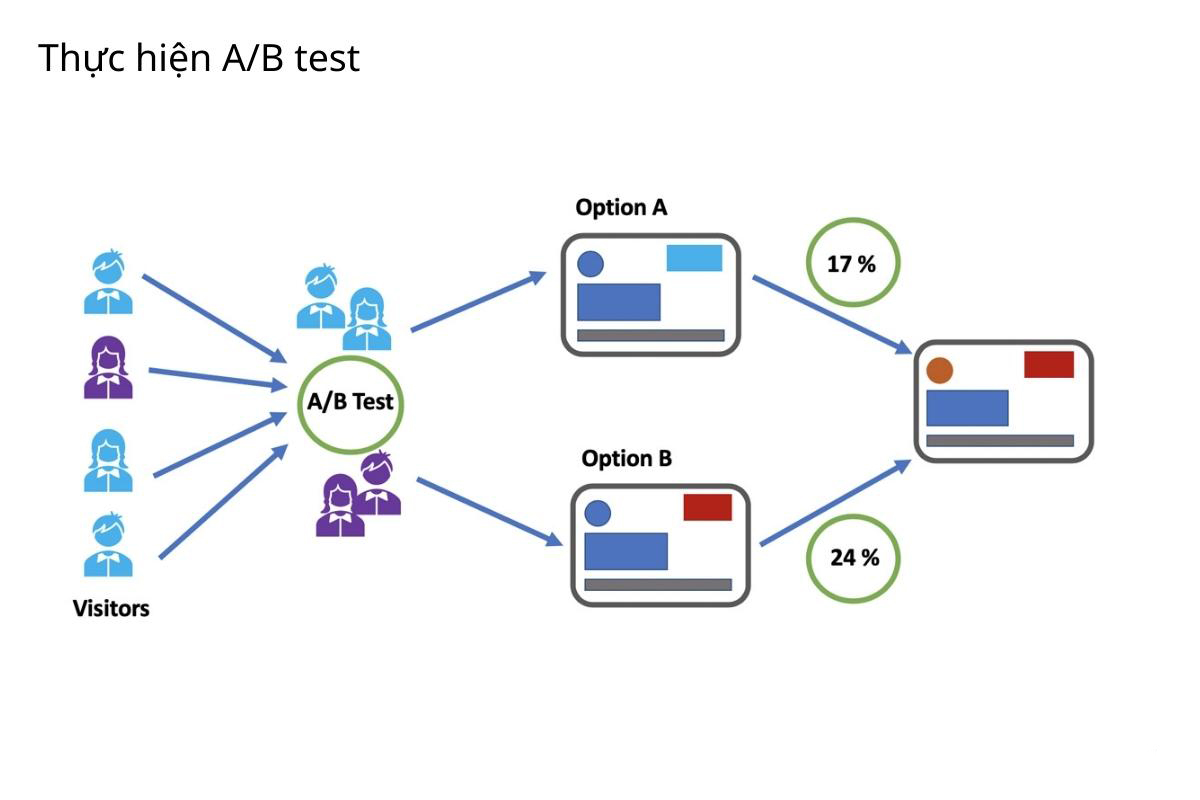Facebook ADS
How to Find Facebook Ad Targeting for Your Product Category
Advertisers running ads across multiple product categories surely face headaches in finding the most effective Facebook ad targeting, right? Our sharing article below will help you find your target customer segment, helping to save the lowest costs. To verify our statement, please refer to the article below.
1. How to set up effective Facebook ad targeting based on interests and behaviors

Targeting helps your ad reach the right target audience. Therefore, to make the most of targeting, you need to thoroughly understand your customers’ interests and behaviors.
The goal of this first step is to help users create a Target list.
You should start from the basic knowledge that anyone needs to learn if they want to do business effectively. For example: product information, competitors for the product you are targeting, and understanding the psychology and desires of your customers.
These are suggestions to help you assess the seriousness of your business in the targeted industry. In particular, you need to answer the following questions:
- What type of product are you selling?
- Who are the potential customers you want to target?
- Can you visualize and describe that customer segment?
- What is the approximate age range of those customers?
- In which locations are your customers?
- What is their income level?
- What are they interested in?
- Which online platforms do they frequently visit?
- How will you compete with your competitors?
- Which brands or product models share the same target audience as you?
After answering the above, you will have a detailed Target list of customer interests and behaviors, with these suggestions:
- Target related to the interests of your customers
- Target related to the interests of your competitors
- Target related to the interests of your business sector
With interest-based targeting arranged in increasing levels, this allows business owners to be creative and develop appropriate marketing strategies.
1.1. Effective Ad Targeting Based on Industry Interests

Interests are the first thing to consider when creating your audience list. For example, a fashion bag seller should think about “fashion bags,” a hat seller should think about “hats.” In short, whatever you are selling, you need to add it as an “interest” in Ad Manager to target your ads effectively.
You can also include similar or closely related products in your business sector to expand your targeting.
1.2. Target Based on Competitors’ Interests
This type of Targeting gathers all audiences interested in branded products that your competitors are selling (usually only pages with over 100,000 likes will appear in the Target section). So how do you identify these Targets?
You have many methods to find competitors, such as using search tools like Google or Facebook.
If you trust that your own fanpage has a large number of likes, you can check the audience information section to see which competitors your customers are following and interested in.
The second way is to use Facebook’s search bar. Type the name of the product category you are selling to see who your competitors’ audiences are.
The third way is to search on Google for relevant websites. If you have a competitor’s website, you can use tools like SimilarWeb to find related pages.
1.3. Target Based on Customer Persona

If the above Targeting is limited in quantity or for many service/product sectors where no specific Targeting options exist, this is considered unlimited interest targeting. Once you grasp the customer persona, your ads will reach closer to the right customers.
You need to answer questions such as:
- What are they interested in?
- Which brands’ products do they usually use?
- What are their interests?
The better you understand your customers, the more effectively you can serve them, which improves business results.
For example, if your target customers are single female office workers with an average income of about 6 million VND, you should consider what kind of phone they use, where they usually search for news, and their shopping interests.
Once you have found effective and suitable ad Targets, you can move on to the next step.
2. Setting up ad sets
After completing step one, you will have a Target list. The next step is to set up your Ad Sets and proceed with A/B testing.
An Ad Set is a combination of multiple Targets: demographic targeting (age, location, gender, etc.), behavior targeting, and interest targeting.
Accordingly, depending on your product category, business objectives, and your sensitivity to the market, you will create different ideal Targets. However, no matter how you combine them, always remember that the goal before creating an Ad Set is to get as close as possible to your target audience. Pay special attention to the following points:
- Know how to use intersections, unions and exclusions skillfully when setting up your ads.
- The smaller the target audience size in the Ad Set, the higher and more expensive the cost will be. Therefore, you should regularly monitor the audience size, aiming for at least 200,000 people for optimal results.

3. Conducting A/B testing

After setting up your Target audience, you need to identify the most effective and cost-efficient ad Targets, which is done through A/B testing. This means you will run all ads with similar conditions across the pre-created groups.
Next, turn off ads that have high costs but low effectiveness. Simultaneously, increase the budget for ads that perform better. This process helps you find the most optimized and effective ads.
Some key rules to keep in mind:
- Run all ads simultaneously under the same conditions: same duration, optimization method, and ad creative.
- Make decisions to adjust ads accordingly (turn off underperforming ads and enable ads that generate higher profits). The ideal time to do this is usually 24 to 48 hours after launching the ads.
4. Monitoring, Reporting, and Continuing Execution
When you see an ad with a relatively low cost, many advertisers tend to become complacent. Unlike Google ads, Facebook ads require close monitoring and continuous optimization. An ad that performs well today may not deliver good results in the following days. Therefore, you must always be mentally prepared and constantly explore new advertising ideas.
Start by keeping a small notebook or digital notes to record the knowledge and lessons learned while running ads. When needed, you can review and draw your own experience from these notes. This practice will help improve your business performance over time.
In the article above, we have shared four steps to find highly effective Facebook ad Targets. If you are new to consumer product business and want to learn more about advertising, please refer to this guide.
